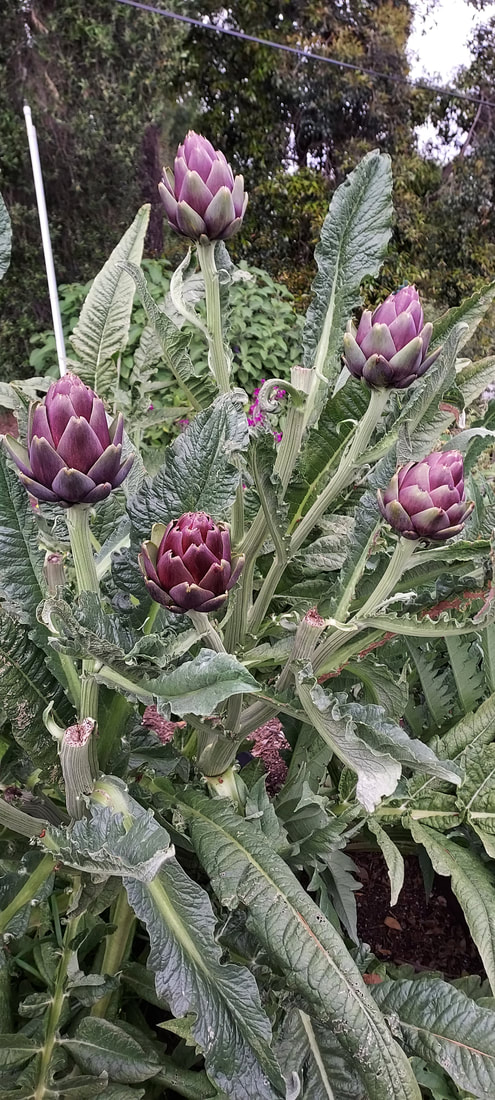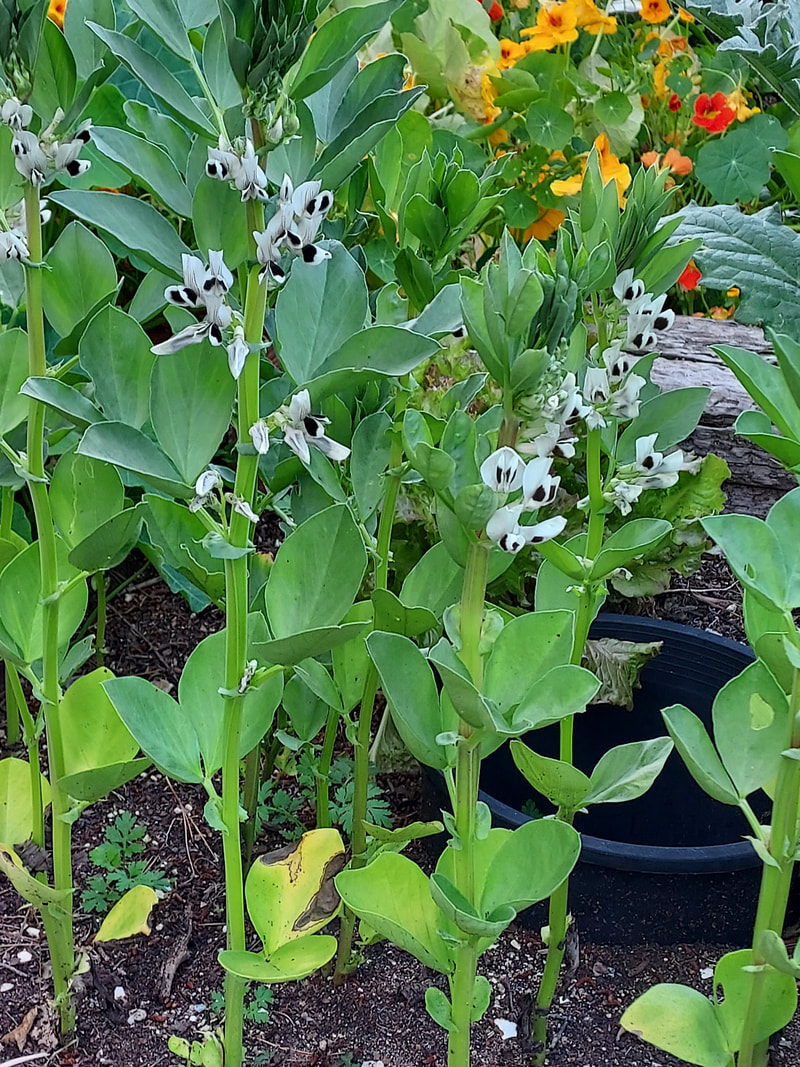| All that winter rain – totaling some 41.45 inches here in Pasadena – has certainly enabled the garden to explode in bounty and brilliance. The veggies I sowed and transplanted last Fall turned into exquisite tastiness all winter and early spring, and the flowers so far this spring have never been so plentifully exuberant. The “nasturtium ocean” had to have pathways chopped into it, which provided the first great amounts of compostable greenery to combine with the dried vines of the end of the edible pea harvest. The remaining nasturtiums have so completely covered the garden that no soil is showing; it’s just all color billowing amongst the alstroemerias and salvias and plectranthus and roses and fruit trees. Bearded iris are finishing up, and spuria iris are unfurling, including new ones I’d planted last spring. Fig trees are heavily set with early-ripening fruit on last-year's wood and new green shoots for late-ripening fruit – assuming I cover them with netting early enough to foil the birds and squirrels. The boysenberries – really, just one plant that I’ve enabled to root many of its vine tips – have never been so lushly set with fruit. I’ve just watered its extensive root system to help enlargen the berries as they ripen. The breadseed poppies took over the bed I’d intended for overwintering chard and beets and spinach and lettuce. The poppies are blooming freely now, and it’ll be a good six to eight weeks before the seed pods are thoroughly crispy dry to be harvested. So I’ve had to find another bed to resow the chard and beets, which this early start will do well through the heat of summer. The chard plants that I’d transplanted last Fall are flushly developing their foliage, but also beginning to bolt (go to seed) with the increasing heat, so we’ll see how long I can continue harvesting before the stalks dry up or the plants resprout new growth at their bases. I’ll also reseed some chard and purchase some small plants to transplant in case the heat will prevent the seeds from germinating. The three plantings of ten kinds of carrots last fall are now gradually maturing to harvestable size. By looking at the base of the greens, I can guess which ones might be large enough to pull, and then I flood the bed to resettle the smaller ones that I may have dislodged when I pulled the bigger ones. The first flush of huge artichokes from established plants that bore fruit last year – the ones that sell for $4 each early in the season at the grocery market – is done, and we’re working on the second and third sets that are progressively smaller. But all of them still have no real “choke” since they’ve been so well watered from all those rains over such a long period of cool weather. We’ll see whether the several plants that I’d sown seeds of last Fall and transplanted early in December will produce fruit or just continue developing their foliage before fruiting next year. The tomatoes that I’d purchased and planted in mid-March at Tomatomania and other nurseries earlier in the season are all about two feet tall, so I’m letting them set their blossoms now that the plants have had a good two months to establish their root systems deeply. And I’ve given each plant two handfuls of Dr. Earth fertilizer and watered it in well to provide the nutrition to develop lots of blossoms, set fruit, and then ripen the fruit. When I was planting the peas last Fall, I also allowed the many volunteer tomato plants that were sprouting to remain in place, so we’ll have a whole bed of “wonder what that one is” to enjoy along with the named varieties. That’s fun but also frustrating since we won’t be able to identify any that are really wonderful! For garden tasks, see May. For other major-topic blogs for this time of year, see Homepage. |
|
0 Comments
|
Categories |










 RSS Feed
RSS Feed